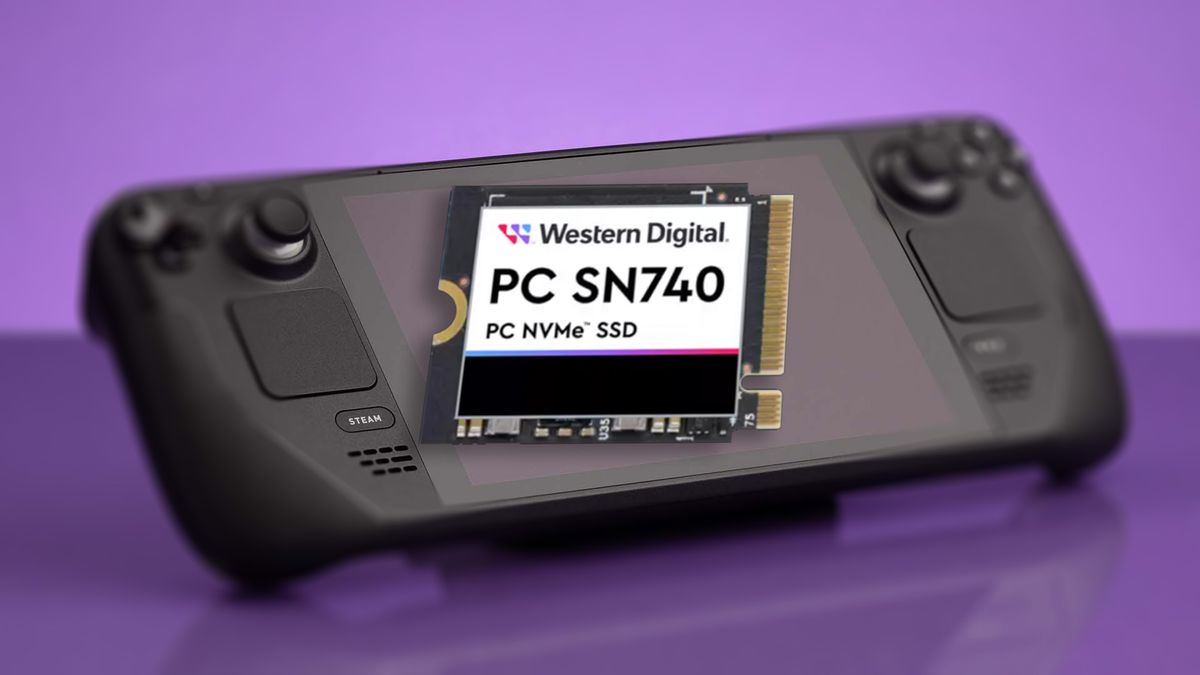Asus‘ TUF graphics cards have ‘quietly’ built a reputation for themselves. Unlike the best-of-everything Strix cards, TUF graphics cards are increasingly engineered to be quiet with a discreet aesthetic. And this latest generation is big. Very big! That’s what it takes to cool the likes of a 450W RTX 4090. The Radeon RX 7900 XTX isn’t as demanding at a regular Nvidia RTX 4090, so if the mega sized TUF cooler can handle an RTX 4090, it should handle the 355W 7900 XTX with ease.
If you haven’t checked out our review of the AMD Radeon RX 7900 XTX, now would be a good time to do so. It’s well worth a look for a deeper dive into the innovative architecture AMD brought to consumer gaming graphics. The chiplets and the interconnect AMD built to get them to talk to each other without too much of a performance penalty is nothing short of amazing.
By now it’s widely accepted that the 7900 XTX is very competitive with Nvidia’s RTX 4080 in rasterized games, but the reference card is forced to compromise because of its compact size and AMD’s desire not to lose too much power efficiency.
The Asus TUF Gaming Radeon RX 7900 XTX OC Edition aims to address the shortcomings of the reference card, allowing the Navi 31 GPU to achieve lower temperatures and reach higher clocks without compromising on power efficiency or resorting to unreasonable noise levels.
Is this silent giant an attractive option? As we’ve seen, the competition is tough, as embodied by the excellent Sapphire Nitro+ Radeon RX 7900 XTX Vapor-X. Though that’s more of a Strix competitor, it’s priced around the same as the TUF, so the Asus needs to excel if it’s to win a recommendation.
Asus TUF Gaming Radeon RX 7900 XTX OC Edition specs
Image 1 of 7
The core specifications are the same across all RX 7900 XTXs. The TUF 7900 XTX comes with the Navi 31 chip with all seven of its chiplets fully unlocked. This means all 96 Graphics Compute Die (GCD) compute units are enabled—12 more than the 84 of the RX 7900 XT. The XTX has 6,144 stream processors, 96 Ray Accelerators and 192 AI processors.
The card has 24GB of 20Gbps GDDR6 memory over a 384-bit memory interface, providing a total of 960 GB/s of memory bandwidth.
Asus TUF Gaming Radeon RX 7900 XTX OC Edition specs
GPU: Navi 31
Shader Units: 6,144
Boost clock speed: 2,565MHz
Memory capacity: 24GB GDDR6
Memory speed: 20Gbps
Outputs: 3x DisplayPort 2.1, 1x HDMI 2.1
Power connectors: 3x 8-pin
Price: $1,199| £1,239 | AU$2,199
The clocks of the TUF 7900 XTX are higher than those of the reference card, with a boost clock of up to 2565MHz. That’s actually not a lot higher than the reference card’s 2499MHz, and a lot lower than the Sapphire Nitro+’s 2680MHz. Asus does offer a software OC mode that increases the boost clock to 2615MHz, however.
The highlight of the card is its cooler. It’s effectively a quad slot card, and at 35.2cm long and 15.8cm high, its certainly not a card for small form factor systems. But I quite like the design. Its grey matte finish adds a touch of class. Asus hasn’t gone overboard on the RGB, either, with just a small element and logo on the right hand side of the card.
The cooler is clearly built for cards in the 450W+ range. It includes a simple baseplate and heatpipe design, with seven heatpipes dissipating heat towards the fins. Thermal padding helps to cool the memory chips and parts of the VRM circuitry.
As with most premium tier cards, the TUF 7900 XTX comes with a metal backplate. However, I found during operation the backplate gets very hot, too hot to the touch in fact. Good airflow takes care of that, but it’s something to be aware of. Thankfully, most modern PC cases include front to rear case airflow, so case depending, it shouldn’t be a problem.
The video outputs consist of three DP 2.1 plus a single HDMI 2.1 port. Asus omitted the USB Type-C connection of the reference cards.
The PCB is pretty mighty. It includes a 17+4 phase VRM with 70a stages. That’s more than enough to power an overclocked Navi 31 GPU. Power is provided by triple 8-pin power connectors. It also includes dual BIOS with performance and quiet modes, though the latter is completely unnecessary as the default mode is already silent.
Asus TUF Gaming Radeon RX 7900 XTX OC Edition benchmarks and performance
Both the 4080 and 7900 XTX have relative strengths and weaknesses. Price notwithstanding, anyone googling ‘RX 7900 XTX vs RTX 4080’ is going to find their comparative performance data illuminating.
Image 1 of 2
Over and over I’ve been bowled over by just how good high end GPU coolers are these days. The Asus TUF 7900 XTX is right up there with the best, delivering a stunningly low peak temperature of just 60°C. It achieves this in effective silence though admittedly that’s in an open test bench. The temperatures will be a little bit higher inside a case.
Test rig
CPU: Intel Core i9 12900K
Motherboard: Asus ROG Maximus Z690 Apex
RAM: 2x 16GB G.Skill Trident-Z DDR5-6000 C36
Storage: 2TB Seagate FireCuda 530
Cooling: Cooler Master PL360 Flux 360mm AIO
PSU: Corsair AX1000
I thought the Sapphire Nitro+ Vapor-X cooler was the best AMD cooler I’d come across to date, but the TUF cooler matches, if not betters it. Again, do make sure to keep that backplate cool as the components there don’t benefit from the monster GPU cooler.
The power consumption numbers show the TUF card consuming around 25W less than the Sapphire, which would also explain the Asus’ 100MHz lower boost clocks. It’s enough of a difference to consistently show up in the performance numbers that follow.
Synthetic gaming performance
Image 1 of 3
1440p Gaming Performance
Image 1 of 6
4K Gaming Performance
Image 1 of 6
Asus TUF Gaming Radeon RX 7900 XTX OC Edition analysis
When it comes to gaming performance, the results land about where I expected. Based on the limited benchmark data I have with the reference 7900 XTX, the TUF is faster than the reference card, while trailing the Sapphire by a consistent margin.
The TUF 7900 XTX and the RTX 4080 line up about where I’d expect. It’s the same story repeated ad infinitum. The 7900 XTX is very good in traditional rasterized titles, while the RTX 4080 is a generation ahead at ray tracing. If RT and the ever improving DLSS 3 and Frame Generation capabilities of Nvidia’s RTX 40 cards are important to you, then the 4080 is a formidable (though expensive) and power efficient competitor.
In some games the TUF 7900 XTX is even competitive with the RTX 4090, but once you enable demanding ray tracing effects, the RTX 4090 pulls well clear, as does the RTX 4080 to a lesser extent.
Does AMD have some driver magic to come? Navi 31 is a radical consumer GPU and I look forward to seeing what the future holds for AMD and upcoming chiplet designs. 3D V-cache GPU anyone?
Asus TUF Gaming Radeon RX 7900 XTX OC Edition verdict
Short of testing ten different 450W RTX 4090’s, the Asus RX 7900 XTX TUF OC Edition features probably the best cooler I’ve come across to date. GPU makers usually have to find an appropriate balance of low noise levels and low temperatures. If a card is too hot, its boost clocks can suffer. Aiming for lower temperatures often means higher fan noise levels. The TUF 7900 XTX has no such dilemma. Backplate aside, the card is never more than lukewarm and it remains effectively silent. A win-win.
It’s build quality is excellent, and its subtle matte metallic finish looks great. The PCB is very over spec and like all RX 7900’s so far, it sticks with the tried and true 8-pin power connectors.
Asus clearly has some headroom to push the power limit a bit higher for higher clocks, though its conservative boost clock is surely deliberate in order to position an as yet unannounced Strix card to fulfil the out-and-out performance role.
Whether the TUF is the card for you depends on what you value most in a graphics card. For outright performance, there are higher clocked RX 7900 XTX cards—not to mention the superior RT performance and the DLSS tech of RTX 40-series cards. The higher clocked RX 7900 XTXs will tend to have a loss of power efficiency, but outright performance at any cost isn’t the be all and end all for everyone.
Even if its not the fastest RX 7900 XTX around, you can be sure you’ll get a well engineered card with no noise to speak of, and these two factors will appeal to many gamers. Quiet computing fans rejoice.
The TUF is up against some stiff competition. Premium tier cards like the Sapphire Nitro+ or Gigabyte Aorus offer similar features and characteristics. Asus does attract loyal buyers and these customers usually don’t mind paying a little extra for an Asus product.
In the end, the Asus TUF 7900 XTX delivers very good 4K gaming performance and the cooler is simply superb. Who knows, AMD might find something and release a high performing driver? Wouldn’t that shake things up a bit!
The Verdict
82
Asus TUF Gaming Radeon RX 7900 XTX OC Edition
Though not the highest clocked 7900 XTX around, it’s certainly one of the quietest, and that fact alone will appeal to many gamers. It’s built like a tank too, though is expensive compared to some equally impressive competing cards.


